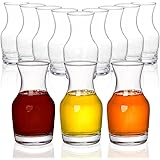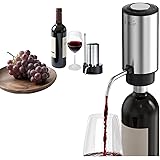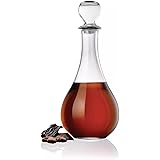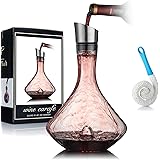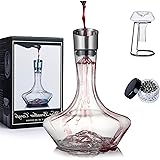Beginning Your Home Grape Winemaking Journey: Day One Essentials
In recent years, the pursuit of crafting homemade grape wine has experienced a significant surge, with industry reports indicating a consistent annual growth of 7-10% in home winemaking equipment sales. For many enthusiasts, the initial steps of this intricate process are often shrouded in a mix of excitement and apprehension. As visually documented in the accompanying video, the commencement of Day 1 in making grape wine at home involves a series of critical procedures that lay the foundation for a successful fermentation and, ultimately, a high-quality finished product. Precision and understanding are paramount during these foundational stages.
The Critical Importance of Sanitation and Preparation
The successful production of grape wine hinges significantly upon meticulous sanitation practices. It is widely understood within the winemaking community that over 80% of wine spoilage issues can be directly attributed to inadequate cleaning and sterilization of equipment. Any surface that will come into contact with the must—the freshly crushed grape juice—must be scrupulously cleaned and sanitized.
This includes primary fermentation vessels, crushing equipment, destemmers, buckets, stirring paddles, and even hydrometers. Typically, a diluted solution of sodium metabisulfite or a specialized no-rinse sanitizer is employed. The protocol ensures that wild yeasts, bacteria, and molds, which could compromise the wine’s flavor and stability, are effectively eliminated.
Selecting Your Grapes: Varietal, Ripeness, and Quality
The quality of the final wine is inextricably linked to the quality of the starting material. Grape selection is therefore a pivotal decision, representing perhaps 70% of the wine’s potential. Factors such as varietal characteristics, ripeness levels, and overall grape health are evaluated.
Optimum ripeness is frequently assessed through Brix readings, which measure the sugar content of the grapes. For red wines, Brix levels generally target 22-25°, while white wines are often harvested slightly earlier, around 20-23° Brix. Furthermore, pH and titratable acidity (TA) levels are critically monitored; these metrics significantly influence fermentation dynamics, microbial stability, and the sensory profile of the finished wine. A pH range of 3.3-3.6 is commonly sought for reds, and 3.0-3.3 for whites, with TA typically falling between 5.5 and 7.5 g/L.
Crushing and Destemming: Extracting the Must
Once the grapes are selected, the next step involves crushing and, often, destemming. Crushing serves to break the grape skins, allowing the juice (must) to be released, facilitating yeast access to sugars. Traditionally, this process was performed by foot, but modern home winemakers frequently utilize manual or electric crushers.
Destemming, the removal of grape stems, is often performed concurrently with crushing. The decision to destem or leave a percentage of stems in the must is a strategic one, primarily impacting the wine’s tannin structure. Stems contain significant amounts of harsh, green tannins and can impart vegetal notes; thus, for many varietals, complete destemming is preferred. However, controlled inclusion of healthy, lignified stems (typically less than 15%) can add complexity and structure to certain red wines, a technique often explored in Burgundian Pinot Noir production.
Must Adjustment and Initial Measurements
Following the extraction of the must, initial adjustments and measurements are routinely performed to optimize fermentation conditions. A critical initial step is the addition of sulfur dioxide (SO2), typically in the form of potassium metabisulfite. This addition inhibits spoilage organisms and protects the must from oxidation. A common target range for free SO2 at this stage is 30-50 ppm, depending on grape health and pH.
Additionally, pectic enzyme is often introduced to break down pectin in the grape skins, improving juice yield and clarity, especially for white wines. Yeast nutrients, which contain essential nitrogen compounds, vitamins, and minerals, are also considered. Furthermore, precise measurements of Brix, pH, and TA are taken using a hydrometer or refractometer, pH meter, and titration kit, respectively. These baseline readings are indispensable for monitoring fermentation progress and making informed decisions regarding potential acid or sugar adjustments prior to inoculation.
Inoculating with Yeast: Initiating Fermentation
The controlled introduction of a selected yeast strain, known as inoculation, is a cornerstone of modern grape wine production. While wild fermentation can occur, it is often unpredictable and carries higher risks of spoilage. Commercial wine yeasts, specifically *Saccharomyces cerevisiae* strains, are chosen for their consistent fermentation characteristics, tolerance to alcohol and SO2, and their ability to enhance specific aromatic profiles.
Before pitching, the dry yeast is rehydrated in warm, chlorine-free water, typically at 100-105°F (38-40°C), for 15-20 minutes. This rehydration process, which has been shown to improve yeast viability by up to 25%, revitalizes the dormant cells, preparing them for the demanding environment of the must. After rehydration, the yeast mixture is slowly tempered by adding small amounts of must, bringing its temperature closer to that of the main batch before it is thoroughly incorporated. This minimizes thermal shock and ensures a robust start to the fermentation.
Setting Up Primary Fermentation
With the yeast successfully pitched, the must is transferred to a primary fermentation vessel. This vessel, often a food-grade plastic fermenter or a large carboy, must provide sufficient headspace—typically 20-25% of the total volume—to accommodate the vigorous foaming that accompanies active fermentation. The vessel is then sealed with an airlock, which allows carbon dioxide (a byproduct of fermentation) to escape while preventing oxygen and contaminants from entering. This anaerobic environment is crucial for healthy yeast activity and preventing oxidation.
Temperature control during primary fermentation is paramount. For red wines, temperatures are generally maintained between 70-85°F (21-29°C) to facilitate color and tannin extraction from the skins, while white wines are typically fermented cooler, at 50-65°F (10-18°C), to preserve delicate aromatics. Studies indicate that maintaining optimal temperature ranges can reduce the risk of stuck fermentations by as much as 30%. Regular monitoring of temperature and specific gravity is essential to track the progression of this initial, dynamic phase of home grape winemaking.


